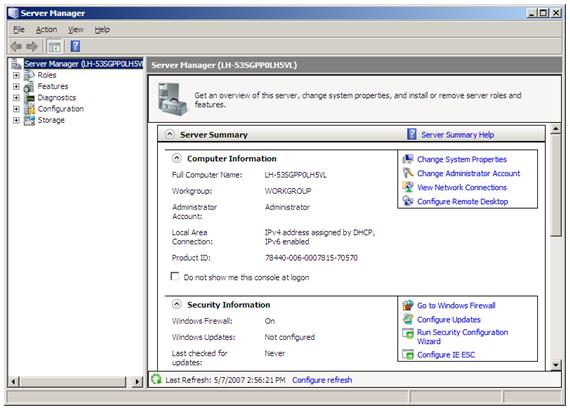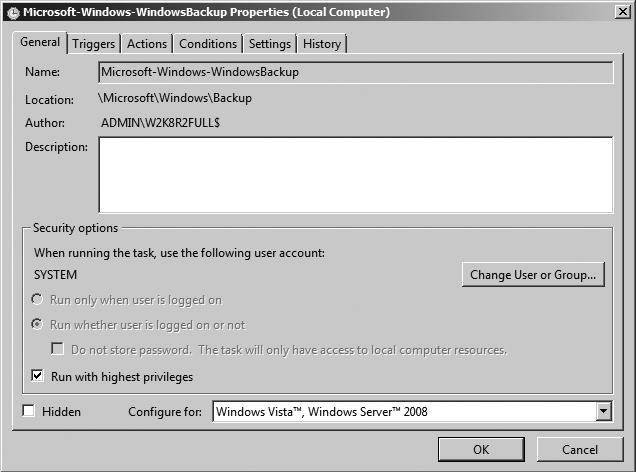

Here, members of the users group are allowed to create folders and append data to files in the root of the system drive. Clicking the Advanced button gives a more detailed view of the permissions associated with the users group (see Figure 2).įigure 2 Advanced View of User Rights over Drive C (Click the image for a larger view) When I click on Users under Group or user names, I see that the permission situation is not as simple: the users group on the system in Figure 1 has Read and Execute, List, Read, and so on.
#Basic windows server 2008 security full#
If I click on SYSTEM under Group or user names, I see that SYSTEM also has full control. If I open Windows Explorer, select the security tab, right-click on Local Disc (C:), and select Properties, I see that administrators have full control.
#Basic windows server 2008 security how to#
Since you cannot appropriately set permissions without understanding what is being done under the surface, I'll start by describing security settings on objects and how they are processed, and I'll follow that with how to set values for them.īefore I delve into the technical details, I want to take a look at the permissions at the root of the system drive in Windows Server 2008 using the Windows access control list (ACL) GUI. Thus, you manage system behavior by setting permissions and rights. The basic security mechanism of Windows involves having a trusted system component check permissions and rights (AccessCheck) before an operation is allowed to proceed. Files, directories, and registry keys are examples of commonly known objects. Whenever something happens in a system, a principal (which could be a process or thread acting on behalf of a user or service) acts upon objects. Managing the Registry and Its Permissions


Interpreting Security Descriptor string_aces Understanding Security Descriptor string_aces This article uses the following technologies: Since the public and private key are mathematically related, they can use the related private key to decrypt the data.Understanding Windows File And Registry Permissions If you want to send someone encrypted data, you can obtain their public key and encrypt the data with their public key. By asking a user or system to perform a digital signature operation with their private key, you get assurance that the entity presenting you with the certificate has possession of the matching private key, proving they are who they are asserting to be.Įncryption – PKI provides the capability to encrypt data that can only be decrypted by someone in possession of the private key. By using these keys and certificates, the following security functions can be performed:ĭigital Signatures – A digital signature can provide assurance that a piece of data such as a document, executable, or script came from a specific source and has not been tampered with since it came from that source.Īuthentication – PKI provides a strong method of authenticating users or systems. A certificate provides a means to tie an identity of a user or system to a specific key pair. Public keys are often widely distributed, while private keys are available only to the individual or system that owns them.

These key pairs are typically referred to as public and private keys. In their most basic form, digital certificates bind identities to cryptographic key pairs that are mathematically related and can be used to provide confidentiality, integrity, and nonrepudiation for other systems and processes. The certificate binds a public key to a named subject, which allows relying parties to trust signatures or assertions made by the subject and expressed in the certificate. Applies To: Windows Server 2003 with SP2, Windows Server 2008 R2, Windows Server 2012 R2, Windows Server 2012Ī PKI is a collection of hardware, software, personnel, and operating procedures that issue and manage certificates.


 0 kommentar(er)
0 kommentar(er)
